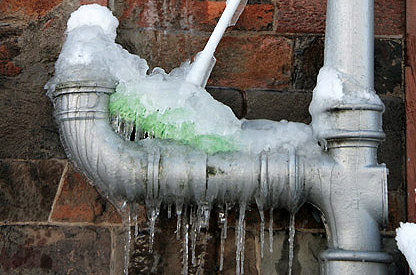Important Tips to Prevent Frozen Plumbing in Winter
Important Tips to Prevent Frozen Plumbing in Winter
Blog Article
What are your opinions regarding How To Avoid Freezing Pipes?

Cold weather can ruin your plumbing, especially by freezing pipes. Here's just how to avoid it from taking place and what to do if it does.
Intro
As temperature levels decrease, the danger of icy pipes rises, potentially bring about expensive repairs and water damage. Comprehending just how to prevent icy pipes is crucial for property owners in cold climates.
Understanding Frozen Pipelines
What causes pipes to ice up?
Pipes freeze when revealed to temperature levels below 32 ° F (0 ° C) for extended periods. As water inside the pipelines ices up, it expands, putting pressure on the pipeline walls and possibly causing them to rupture.
Threats and damages
Icy pipelines can result in water supply interruptions, property damages, and expensive repair services. Ruptured pipelines can flood homes and create comprehensive structural damage.
Indications of Frozen Pipes
Recognizing icy pipes early can stop them from rupturing.
Just how to determine frozen pipelines
Look for lowered water flow from faucets, unusual smells or noises from pipes, and visible frost on exposed pipes.
Avoidance Tips
Shielding prone pipelines
Wrap pipelines in insulation sleeves or use heat tape to shield them from freezing temperatures. Focus on pipelines in unheated or outside areas of the home.
Heating strategies
Keep indoor areas sufficiently heated up, particularly areas with plumbing. Open up closet doors to enable warm air to flow around pipes under sinks.
Safeguarding Exterior Pipes
Yard hose pipes and outside faucets
Separate and drain pipes garden hoses before winter season. Set up frost-proof faucets or cover outdoor faucets with shielded caps.
What to Do If Your Pipelines Freeze
Immediate actions to take
If you presume frozen pipes, keep taps available to soothe stress as the ice melts. Utilize a hairdryer or towels soaked in hot water to thaw pipes slowly.
Long-Term Solutions
Structural adjustments
Consider rerouting pipelines away from outside walls or unheated locations. Add additional insulation to attics, cellars, and crawl spaces.
Upgrading insulation
Purchase high-grade insulation for pipes, attic rooms, and walls. Proper insulation aids maintain consistent temperature levels and reduces the threat of icy pipelines.
Final thought
Avoiding frozen pipelines requires positive procedures and quick feedbacks. By recognizing the reasons, indicators, and preventive measures, home owners can protect their plumbing during cold weather.
5 Ways to Prevent Frozen Pipes
Drain Outdoor Faucets and Disconnect Hoses
First, close the shut-off valve that controls the flow of water in the pipe to your outdoor faucet. Then, head outside to disconnect and drain your hose and open the outdoor faucet to allow the water to completely drain out of the line. Turn off the faucet when done. Finally, head back to the shut-off valve and drain the remaining water inside the pipe into a bucket or container. Additionally, if you have a home irrigation system, you should consider hiring an expert to clear the system of water each year.
Insulate Pipes
One of the best and most cost-effective methods for preventing frozen water pipes is to wrap your pipes with insulation. This is especially important for areas in your home that aren’t exposed to heat, such as an attic. We suggest using foam sleeves, which can typically be found at your local hardware store.
Keep Heat Running at 65
Your pipes are located inside your walls, and the temperature there is much colder than the rest of the house. To prevent your pipes from freezing, The Insurance Information Institute suggests that you keep your home heated to at least 65 degrees, even when traveling. You may want to invest in smart devices that can keep an eye on the temperature in your home while you’re away.
Leave Water Dripping
Moving water — even a small trickle — can prevent ice from forming inside your pipes. When freezing temps are imminent, start a drip of water from all faucets that serve exposed pipes. Leaving a few faucets running will also help relieve pressure inside the pipes and help prevent a rupture if the water inside freezes.
Open Cupboard Doors
Warm your kitchen and bathroom pipes by opening cupboards and vanities. You should also leave your interior doors ajar to help warm air circulate evenly throughout your home.

I recently found that post about How to prepare your home plumbing for winter weather while looking around the search engines. Loved our post? Please share it. Let other people check it out. I truly appreciate reading our article about Helpful Tips to Prevent Frozen Pipes this Winter.
Check This Out Report this page